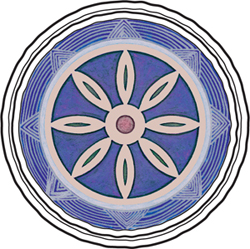Buddhism
FOUNDED: Buddhism began about 2,500 years ago in India.§
FOUNDER: Gautama Siddhārtha, the Buddha, or “Enlightened One.”§
MAJOR SCRIPTURES: The Tripitaka, Anguttara-Nikāya, Dhammapada, Sutta-Nipāta, Samyutta-Nikāya and many others.§
ADHERENTS: Over 300 million.§
SECTS: Buddhism today is divided into three main sects: Theravāda or Hinayāna (Sri Lanka, Thailand, Burma, Cambodia), Mahāyāna (China, Japan, Vietnam, Korea), and Vajrayāna (Tibet, Mongolia and Japan). §
Life’s goal is nirvāṇa. Toward that end, Buddha’s teachings are capsulized in the Four Noble Truths, chatvāri ārya satyāni:§
- THE TRUTH OF SUFFERING: Suffering, duḥkha, is the central fact of life. Being born is pain, growing old is pain, sickness is pain, death is pain. Union with what we dislike is pain, separation from what we like is pain, not obtaining what we desire is pain.
- THE TRUTH OF THE ORIGIN (SAMUDĀYA) OF SUFFERING: The cause of suffering is the desire (icçhā), craving (tanhā) or thirst (trishnā) for sensual pleasures, for existence and experience, for worldly possessions and power. This craving binds one to the wheel of rebirth, saṁsāra.
- THE TRUTH OF THE CESSATION (NIRODHA) OF SUFFERING: Suffering can be brought to an end only by the complete cessation of desires—the forsaking, relinquishing and detaching of oneself from desire and craving.
- THE TRUTH OF THE PATH (mārga) TO ENDING SUFFERING: The means to the end of suffering is the Noble Eightfold Path (ārya āshṭānga mārga), right belief, right thought, right speech, right action, right livelihood, right effort, right mindfulness and right meditation.
The primary goal of the Buddhists is nirvāṇa, defined as the end of change, literally meaning “blowing out,” as one blows out a candle. Theravāda tradition describes the indescribable as “peace and tranquility.” The Mahāyāna and Vajrayāna traditions view it as “neither existence nor nonexistence,” “emptiness and the unchanging essence of the Buddha” and “ultimate Reality.” It is synonymous with release from the bonds of desire, ego, suffering and rebirth. Buddha never defined nirvāṇa, except to say, “There is an unborn, an unoriginated, an unmade, an uncompounded,” and it lies beyond the experiences of the senses. Nirvāṇa is not a state of annihilation, but of peace and reality. As with Jainism, Buddhism has no creator God and thus no union with Him.§
Buddhism takes followers through progressive stages of dhyāna, samāpatti and samādhi. Dhyāna is meditation, which leads to moral and intellectual purification, and to detachment which leads to pure consciousness. The samāpattis, or further dhyānas, lead through a progressive nullification of psychic, mental and emotional activity to a state which is perfect solitude, neither perception nor nonperception. This leads further to samādhi, supernatural consciousness and, finally, entrance into the ineffable nirvāṇa. Many Buddhists understand the ultimate destiny and goal to be a heaven of bliss where one can enjoy eternity with the Bodhisattvas. Mahāyāna places less value on monasticism than Theravāda and differs further in believing one can rely on the active help of other realized beings for salvation. Vajrayāna, also called Tantric or Mantrayāna Buddhism, stresses tantric rituals and yoga practices under the guidance of a guru. Its recognition of and involvement in the supernatural distinguishes it from other Buddhist schools.§
- I believe that the Supreme is completely transcendent and can be described as Sūnya, a void or state of nonbeing.
- I believe in the Four Noble Truths: ) that suffering is universal; ) that desire is the cause of suffering; ) that suffering may be ended by the annihilation of desire; ) that to end desire one must follow the Eight-Fold Path.
- I believe in the Eight-Fold Path of right belief, right aims, right speech, right actions, right occupation, right endeavor, right mindfulness and right meditation.
- I believe that life’s aim is to end suffering through the annihilation of individual existence and absorption into nirvāṇa, the Real.
- I believe in the “Middle Path,” living moderately, avoiding extremes of luxury and asceticism.
- I believe in the greatness of self-giving love and compassion toward all creatures that live, for these contain merit exceeding the giving of offerings to the Gods.
- I believe in the sanctity of the Buddha and in the sacred scriptures of Buddhism: the Tripitaka (Three Baskets of Wisdom) and/or the Mahāyāna Sūtras.
- I believe that man’s true nature is divine and eternal, yet his individuality is subject to the change that affects all forms and is therefore transient, dissolving at liberation into nirvāṇa.
- I believe in dharma (the Way), karma (cause and effect), reincarnation, the saṅga (brotherhood of seekers) and the passage on Earth as an opportunity to end the cycle of birth and death.
